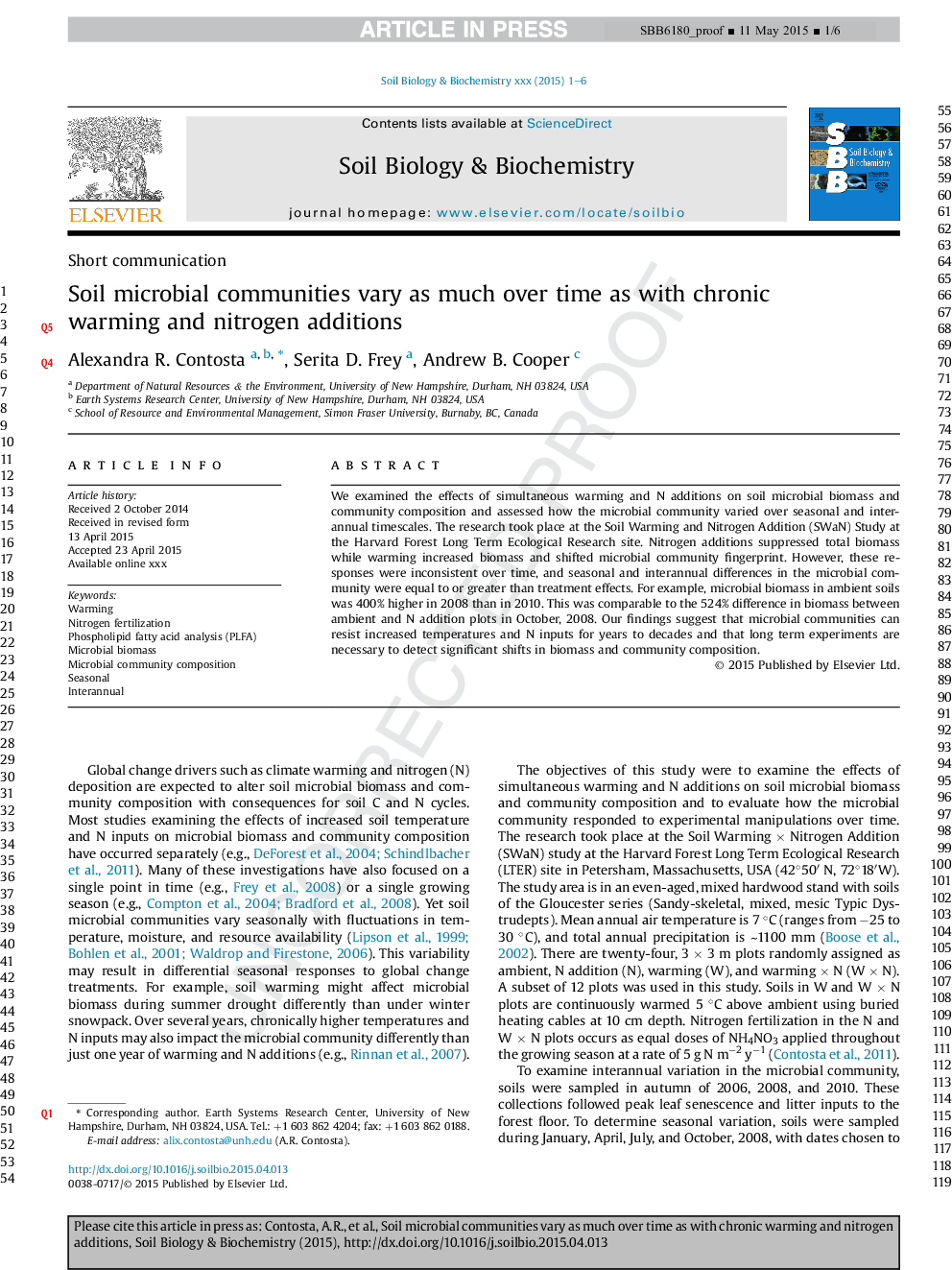| Article ID | Journal | Published Year | Pages | File Type |
|---|---|---|---|---|
| 8363886 | Soil Biology and Biochemistry | 2015 | 6 Pages |
Abstract
We examined the effects of simultaneous warming and N additions on soil microbial biomass and community composition and assessed how the microbial community varied over seasonal and interannual timescales. The research took place at the Soil Warming and Nitrogen Addition (SWaN) Study at the Harvard Forest Long Term Ecological Research site. Nitrogen additions suppressed total biomass while warming increased biomass and shifted microbial community fingerprint. However, these responses were inconsistent over time, and seasonal and interannual differences in the microbial community were equal to or greater than treatment effects. For example, microbial biomass in ambient soils was 400% higher in 2008 than in 2010. This was comparable to the 524% difference in biomass between ambient and N addition plots in October, 2008. Our findings suggest that microbial communities can resist increased temperatures and N inputs for years to decades and that long term experiments are necessary to detect significant shifts in biomass and community composition.
Keywords
Related Topics
Life Sciences
Agricultural and Biological Sciences
Soil Science
Authors
Alexandra R. Contosta, Serita D. Frey, Andrew B. Cooper,
